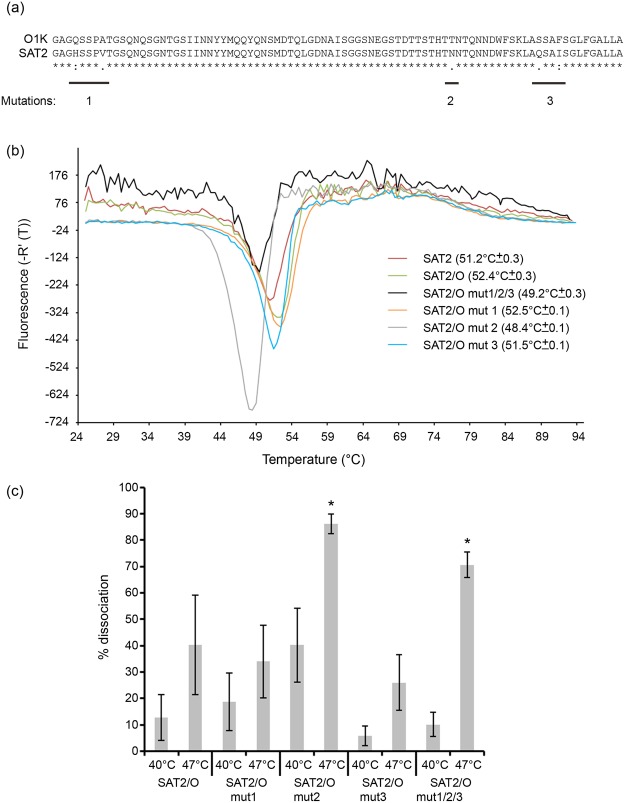Figure 3.
Thermostability analysis of chimeric SAT2/O recombinant FMDVs containing targeted mutations in the VP4 non-structural protein. (a) Alignment of the VP4 amino acid sequences of O1Kaufbeuren (O1K) and SAT2 ZIM/7/83 FMDV strains. Residues that are conserved (asterisks), have strongly similar properties (colons) or similar properties (periods) are indicated. (b) Thermofluor analysis to determine the capsid stability of wild type SAT2, SAT2/O and SAT2/O viruses containing one (SAT2/O mut 1, SAT2/O mut 2, SAT2/O mut 3) or three (SAT2/O mut 1/2/3) targeted VP4 mutations. The respective temperatures of genome release, and hence capsid disassembly, for three independent experiments are shown in brackets. (c) Analysis of capsid stability by double antibody sandwich ELISA using a single-domain llama antibody (M377F VHH) that specifically recognises intact SAT2 FMDV capsid (146S). SAT2/O and SAT2/O viruses containing one (SAT2/O mut 1, SAT2/O mut 2, SAT2/O mut 3) or three targeted (SAT2/O mut 1/2/3) VP4 mutations were incubated at different temperatures (4 °C, 40 °C and 47 °C) for 10 minutes and the respective percent dissociation, as determined by the loss of 146S, was calculated following incubation at each temperature. Error bars indicate standard deviation and asterisks indicate a significant (Tukey’s method; 95% confidence, P < 0.05) increase in dissociation.

